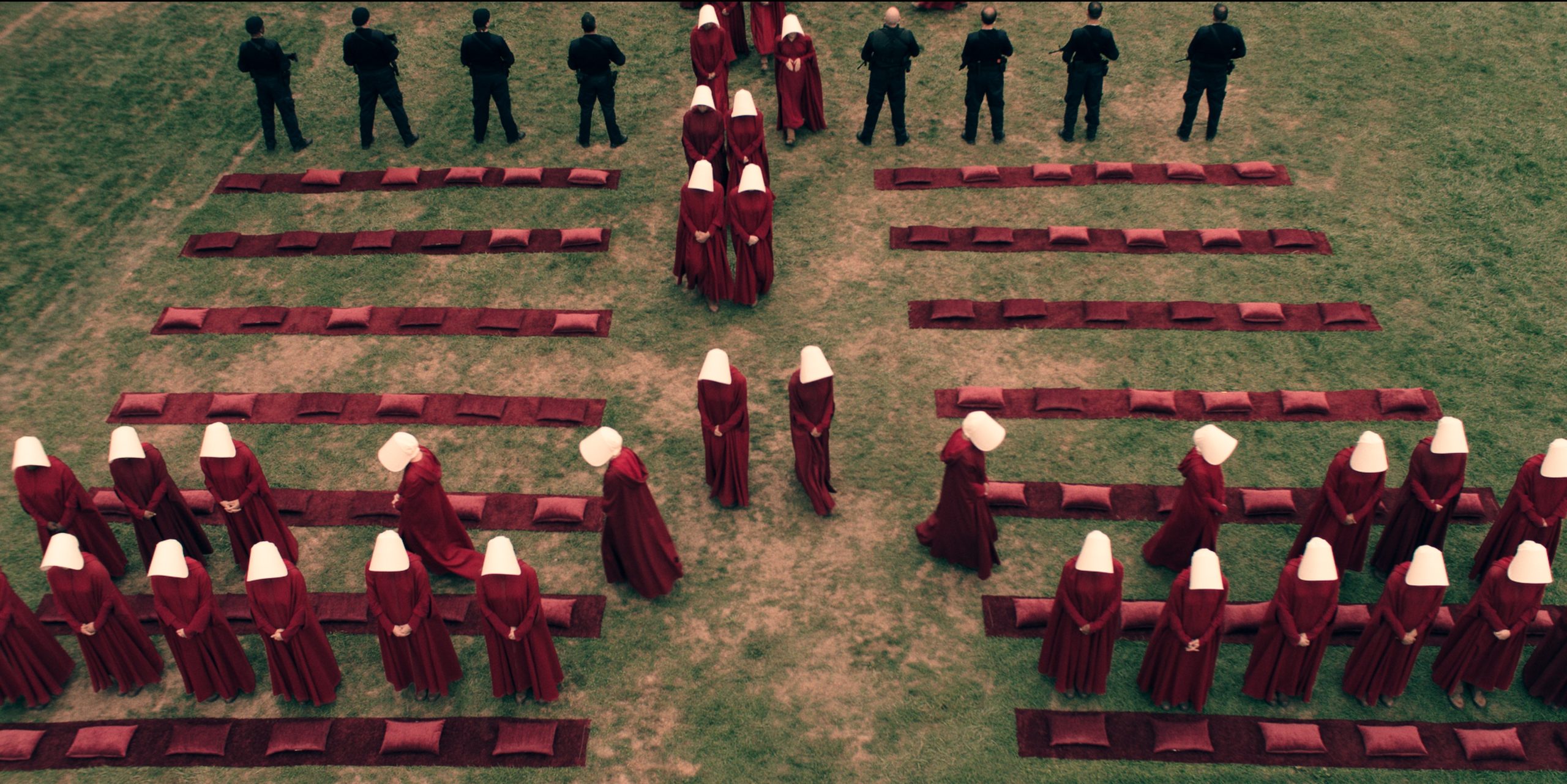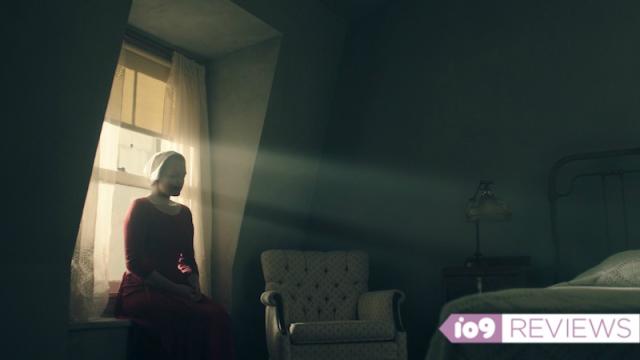Hulu’s adaptation of Margaret Atwood’s classic novel The Handmaid’s Tale isn’t a groundbreaking show in terms of storytelling or film technique. Unfortunately, given the state of the world, it doesn’t need to be, and that’s what makes the show so powerful — and so chilling.
Image: Hulu
These days, it seems as if headlines constantly scream about how dystopian science fiction stories (or, to use Atwood’s preferred phrase, “speculative fiction”) are “coming true.” That what were meant to be warnings feel more like actual events, or maybe prophecies. It’s this space that The Handmaid’s Tale, like Amazon’s The Man in the High Castle, occupies.
Atwood’s novel was published in 1985, telling the story of a young woman named Offred in a future version of the United States. The country is now called Gilead after undergoing a “revolution” where a theocracy takes over, justifying its autocratic rule because of a “plague” of sterility. Offred describes her life as a handmaid, a special class of woman who has proven that she is fertile and serves as breeding stock for higher-class couples who cannot conceive. We also get flashbacks to Offred’s life before and during the revolution. Both the book and the movie tell of the dehumanising hell that results from defining women by their reproductive abilities or their service to a family.
It is, in a way, a very straightforward story, but Hulu’s TV adaptation still tells the story very well, and what it puts on-screen is immensely compelling. Since we spend so much time and energy watching gains made by women be attacked and rolled back in real life, there is something mesmerising and valuable about a show which reinforces, loudly, that these things are wrong. The Handmaid’s Tale’s sobering images demonstrate what this kind of thinking leads to, and that it’s not deliverance, but disaster.
But the show’s’s best moments aren’t in its feminism, since it feels like the issue of womanhood is treated in a vacuum sealed off from all the other systemic issues it’s intertwined with, but in its depiction of how easily gains can be lost and rights stripped away. Flashbacks show us how new laws, spurred on by fears and promised to be temporary, slowly stripped women of their peoplehood. (Want to feel bleak about the usefulness of marches? This is the show for you!) We see scenes where the chosen handmaids are trained for their new lives. We see how easy it is to manipulate a group to shame and obey, out of fear and need for survival. Groupthink, through group ritual, makes it easy to stand out and be punished. This show excels in showing how much easier submission is than resistance, and how scary it is to fight when you have something to lose.

Image: Hulu
The first four episodes of the series immerse the audience in a world that is deeply terrifying and tragic. Its excellent use of iconography reinforces how much of what’s happening is a clear step backwards. Not only in the infamous red and white outfits of the handmaids — which are taken straight from the cover of the books and resemble something out of colonial Williamsburg — but in the supermarkets and the food logos, which evoke the ’50s, and in the symbols on the hoods of the executed, which parallel the patches used by Nazis in the Holocaust.
Much like The Man in the High Castle, which shares a lot of DNA with this show, The Handmaid’s Tale pairs the recognisable with the hated with a lot of visual flair. It layers recognisable symbols from various eras on top of each other, effectively reminding us constantly that the future presented here is an extension of lessons not learned, not an aberration caused by a cataclysm we can’t imagine. This show does allegory well.
One thing it doesn’t do well, unfortunately, is voiceover, which the show uses to baldly state subtext that the actors involved are good enough to communicate. There’s a scene at the end of the first episode, which takes place in near-silence and where the sense of oppression and being under constant watch is perfectly conveyed through Elisabeth Moss’ walk through a house that belongs to the family she is assigned to but does not belong in. The voiceover that comes in at the end shatters that perfect sense of unbearable tension.
The bigger issue is that it doesn’t feel as deeply thought-through as it could be. Issues are hinted at, a few discussions point to the substantive issues below the surface, and I hope the show delves into them in later episodes. Like Atwood’s novel, the show doesn’t explore a broader spectrum of womanhood beyond it stated scope, but it feels more like an oversight with the show given that it has so much more space. It’s especially aggravating when the show does explore avenues that were lacking in the original book, especially Alexis Bledel’s character Ofglen. This new material breathes additional life into Atwood’s story, and I wish there was more of it.
It’s incredibly difficult to watch The Handmaid’s Tale and not be affected, to feel like we’re so much closer to it being reality than when it was first written. But while it’s definitely worth watching, it doesn’t feel like it’s trying to tell us something new or challenge us. And that’s probably ok. After all, if there’s one thing you want to keep absolutely straightforward and unambiguous, it’s a warning sign.
